#british regimental history
Text
Glider Pilots at Arnhem :: Mike Peters & Luuk Buist
Glider Pilots at Arnhem :: Mike Peters & Luuk Buist

View On WordPress
#978-1-8441-5763-1#airborne actions#airborne operations#army glider pilot regiment#army glider pilots#battle arnhem#books by mike peters & luuk buist#british gliders#british military history#british regimental history#first edition books#glider pilots#gpr wing#horsa loading diagram#jon wilkinson#mike dauncey#military history#oosterbeek church#operation comet#operation market#regimental histories#xxx corps
0 notes
Text

Some studies I did of the British at Monmouth this past June, featuring soldiers and musicians from the 22nd, 33rd, and 71st regiments of foot, inspired by William Barns Wollen’s 1911 sketchbook. Fantastic event and I can’t wait to do it again.
(Alternate, color-less version below cut)

#I never post my art mostly because I don’t have anything Postable but I liked this one#also the closest thing I’ve ever done to a self portrait lol#I had so much fun at this event this was the result of me not knowing what to do with myself afterward#my art#art#british military#amrev#revwar#reenactment#revolutionary war#american revolution#redcoats#god save the cheshire regiment#I am Scared to post this but whatever#historical art#history#monmouth#battle of monmouth#the captain draws#redcoatposting#awi
218 notes
·
View notes
Text

King George V unveiling London's Queen Victoria memorial in 1911
#Queen Victoria#King George V#Queen Mary#Old London#Victoria memorial#monarchy#Buckingham Palace#uniforms#Queen's regiments#Sydney Prior Hall#brf#British history#UK
134 notes
·
View notes
Text
No one drips like the Royal Marines
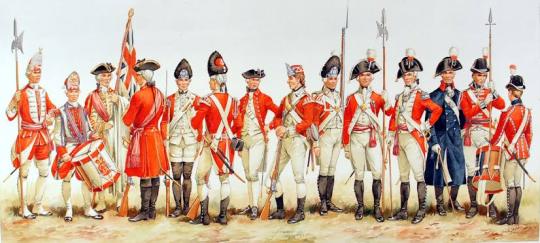


#royal marines#well#except the light infantry and rifle regiments#but that goes without saying#napoleonic wars#victorian#georgian#military history#history#british
80 notes
·
View notes
Text
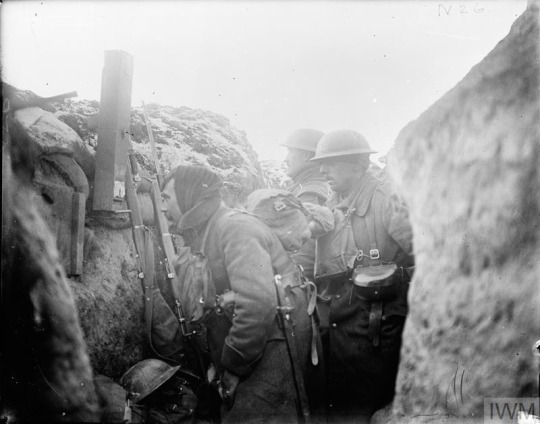
Men of the 12th Battalion, East Yorkshire Regiment using a perisope in a trench in the Arleux sector, 9 January 1918.
19 notes
·
View notes
Photo

Θαρσείν χρη, τάχ’ αύριον έσσετ’ άμεινον. Eλπίδες εν ζωοίσιν, ανέλπιστοι δε θανόντες.*
- Theocritus
You need to have courage, because tomorrow will be better. While there's life there’s hope, and only the dead have none.*
My ex-regiment proudly traces its lineage back to the Glider Pilot Regiment which spearheaded British airborne forces to take Pegasus Bridge on D Day 6 June 1944. During my service I had the privilege to travel there and take part in the commemorative ceremonies whenever D Day came around. I loved listening to the stories of some of the surviving veterans and also some of the local French too. The British taking of Pegasus Bridge - re-named partly after the emblem of pegasus of airborne forces - was one of the stand out events of the first days of D Day by British forces.
Airborne landings in the British Sector were targeted mainly at the Orne River/Caen Canal crossings and the artillery installations of the Merville Battery. The strategic purpose was to secure river crossings for the beach break-out and to reduce enemy defences.

At 00:16 hours on 6th June parachutists and gliders from the Airborne Division, consisting of D Company of the Oxfordshire & Buckinghamshire Light Infantry, began to land east of the River Orne and the Caen Canal.
The small force of 181 men was commanded by Major John Howard and joined with a detachment of Royal Engineers who landed at Ranville-Benouville in six 28-men Horsa gliders. Having taken off from Dorset, the gliders were towed across the Channel by Halifax Bombers. With perfect navigation and piloting skill, the gliders landed on time and on target within few yards of each other.
Major Howard’s glider landed within a few feet of the canal bridge. The bridge was captured after a fierce ten minute fire fight, the action all over by 00:26, a full six hours before the beach landings.
But the success of the mission was also down to intelligence gathered by locals and passed onto British intelligence through the French resistance channels.
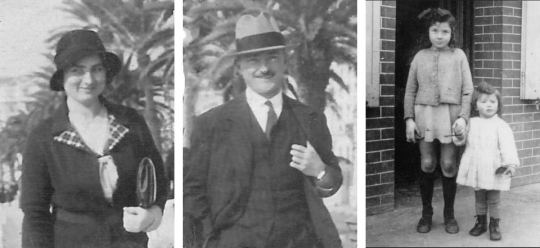
One of these was Georges Gondrée and his wife, Thérèse. Georges and Thérèse moved to Bénouville where they bought a small café in 1934 on the shore along the Bénouville Bridge, called Café Gondrée. During the Invasion, they had three small daughters: Georgette, Arlette, and the newborn Françoise.
The family certainly hated the German occupation. Among other things, they refused to allow their café to serve as a billet for German soldiers. But they went further by joining the French resistance at great danger to themselves.
As the war progressed, the more risks and dangerous activities they undertook against the Germans. Thérèse, who grew up in Alsace, knew quite a bit of German. Local residents did not like her Germanic Alsatian accent but she took care to keep her knowledge of German secret from the German soldiers themselves. This often helped her to eavesdrop on conversations of the soldiers and then pass on important information to the resistance through her husband, Georges. There were a few times when they were nearly caught but somehow they survived.
The information gathered by the Gondrée family contributed greatly to the insight of Major Howard and his troops to better assess the defensive positions around the bridge. Among other things, Thérèse was able to pinpoint the exact location of the detonator that was supposed to have detonated the bridge during the attack. Georges was also known to British intelligence and even Major Howard had heard his name mentioned during the planning of the invasion itself.
The importance of the family’s contribution to the success of the British attack can also be seen from an example during early May 1944. When Field Marshal Erwin Rommel came to inspect the bridge, he had given the order to place an anti-tank gun beside the Bénouville Bridge. Within two days Major Howard had been informed that a new structure was being built along the bridge and within a week Georges’ observation had helped to confirm both its function and exact location.

So, just 90 minutes after taking off from RAF Tarrant Rushton in England, Major Howard was able to send the code words “Ham and Jam”, indicating that both bridges had been captured. In this early action of D-Day, the first house on French soil was liberated, and the first British soldier of the Normandy Invasion was killed in action: Lieutenant Den Brotheridge.
It was No. 1 Platoon which knocked out a machine gun position firing from the bridge and rushed across to capture the far side, firing from the hip and lobbing grenades during the charge. Lt. Brotheridge was mortally wounded by gunfire as he made a grenade attack on a second machine gun position. The bridge had been prepared by the enemy for demolition, although the Royal Engineers removed the unset charges.
Within half an hour of the bridge being taken, 6th Airborne parachutists landed to provide reinforcement. The Ox & Bucks were reinforced half-an-hour after the landings by 600 men of 7th Battalion, the Parachute Regiment who were the relieving force to bear the brunt of German counter-attacks to the west of the Caen Canal throughout the 6th of June.
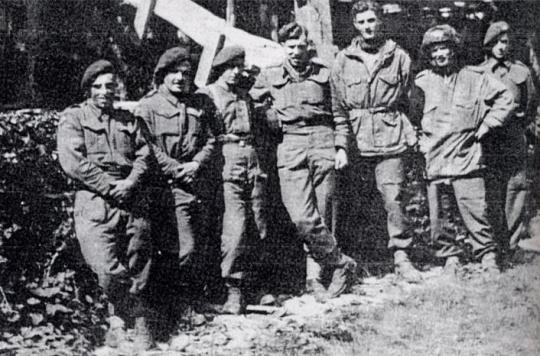
The Battalion distinguished itself in holding a wide bridgehead around ‘Pegasus Bridge’ against constant enemy attacks which were often armour supported. In particular the “A” Company, based in the nearby village of Bénouville, suffered the most severe fighting and were eventually cut off from the remainder of the 7th Battalion.
The first relief in force was from 6 Commando, led by the commander of the 1st Special Service Brigade, Lord Lovat, who arrived to the sound of the Scottish bagpipes, played by the 21–year-old so-called ‘Mad Piper’, Private Bill Millin.
The remnants of the 7th Battalion’s “A” Company continued to hold out until 9:15pm on the 6th June when British infantry, in the form of the 2nd Battalion The Royal Warwickshires, arrived from the invasion beaches and secured Bénouville, and so allowed the evacuation of “A” Company’s many wounded.
In honour of the distinctive emblem of the Parachute Regiment, the distinctive bridge at Benouville was renamed and will forever be known as “Pegasus Bridge”.

Arlette Gondrée being kissed by two veterans who remember her parents.
Over the years, many thousands of pairs of British boots have crossed the threshold of the Café Gondrée. General Montgomery in 1945, veterans paying tribute to fallen comrades and numerous members of the Royal family. Arlette Gondrée, the daughter of Georges and Thérèse, still recalls with crystal clarity the very first occasion a British soldier arrived at the cafe on the night of June 5, 1944, when she was just four-years-old, cowering with her family in the basement during the start of the D-Day invasion.
Commemorating the landings in 1945, General Montgomery visited the Café Gondrée Pegasus Bridge, renamed after the winged emblem of the British 6th Airborne Division, with some widows of the soldiers lost in the Normandy campaign. Georges produced some of the vintage champagne he had hidden, including a 1926 Pouilly-Fuissé.
Over the ensuing years, the family never ceased to celebrate their liberation. “Daddy would make a large U-shaped table in the café and we would eat together as a happy family, and very, very thankful to the British for what they did for us. And that remains so to this day.”
Life was hard for years, made worse by rationing. The effect of the ordeal on the girls was subtle, but not invisible: in November 1944, the Red Cross visited and told Arlette if she stopped biting her nails, they would give her a real doll to replace her cardboard toy. The café didn’t open properly again until June 1945.

To this day, Mme Gondrée keeps her “little house” as a shrine to the British Airborne forces that liberated her family. She has said that she always felt honoured to have the privilege of being custodian of the memories of that fateful day.
Photo: Major John Howard is flanked by George Gondrée and Lt. David Woods raising a glass to the successful capture of Pegasus Bridge that day.
#theocritus#greek#classical#quote#D Day#DDay#British army#second world war#pegasus bridge#glider pilot regiment#gondree cafe#georges gondree#therese gondree#arlette gondree#major john howard#lt david woods#military history#french resistance#history#courage#bravery
60 notes
·
View notes
Text
#OTD in 1920 – IRA 3rd Cork Brigade personnel attacked a lorry carrying British troops from the Essex Regiment at the Toureen Ambush, on the road between Bandon and Cork.
Up until the ambush the 3rd West Cork Brigade Flying Column had not before engaged the British troops stationed in Co Cork in a proper battle. The Brigade had finished its training and to get it ready for combat it had to get in an engagement with the British soldiers.
Under Tom Barry at Toureen, near Ballinhassig, on the old main road between Bandon and Cork city, at 4 a.m. on 22 October 1920,…
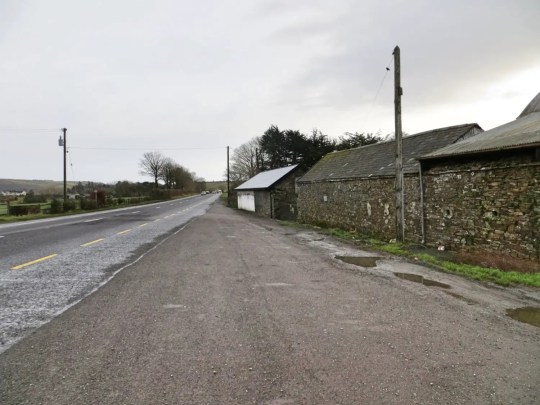
View On WordPress
#Ambush#Bandon#British soldiers#Charlie Hurley#Co. Cork#Cork City#Cork to Innishannon Road#Essex Regiment#IRA 3rd Cork Brigade#Ireland#Irish History#Irish War of Independence#Liam Deasy#Tom Barry#Toureen Ambush site#Victoria Barracks
9 notes
·
View notes
Text

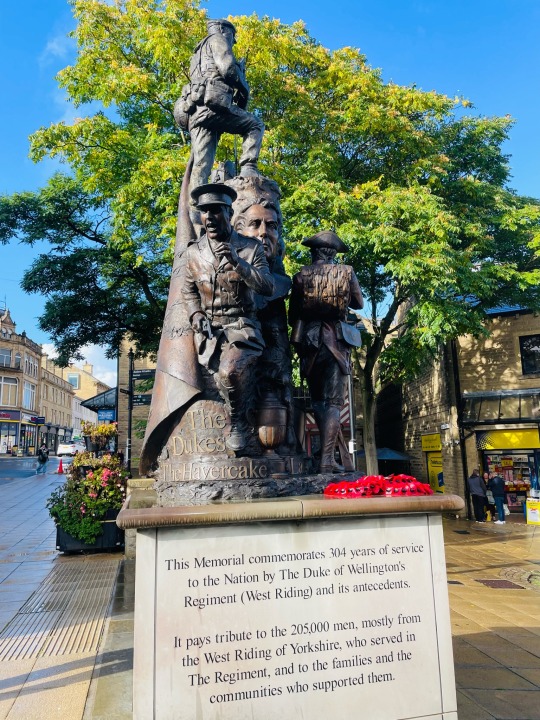

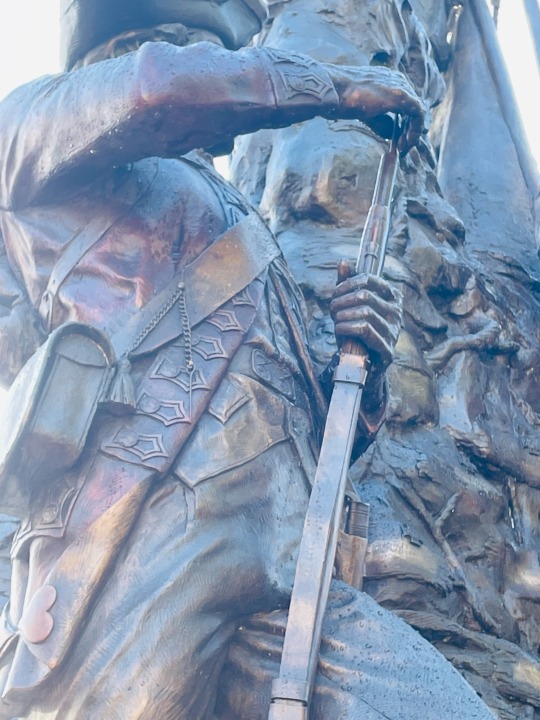


The Duke of Wellington’s Regiment’s memorial in Halifax, Yorkshire.
44 notes
·
View notes
Text



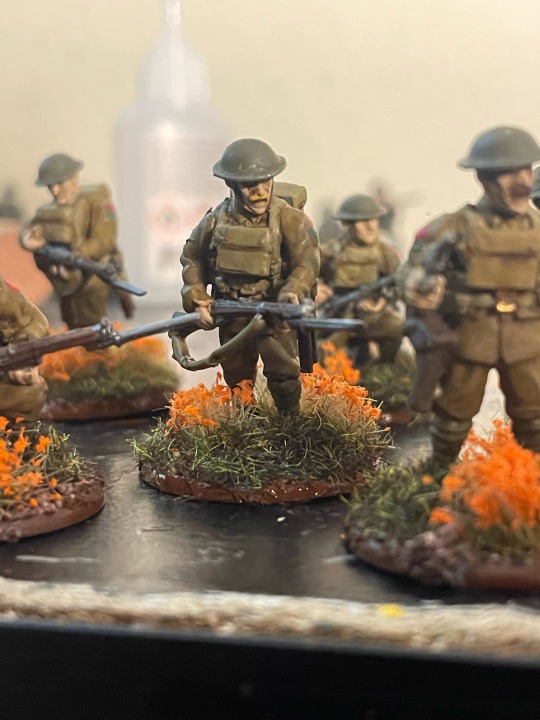

Lads of the 11th Battalion, the Border Regiment. Men from Northern England rushed to enlist in this service battalion in 1914, raised for the war in Europe. Paid in part by Hugh Cecil Lowther, 5th Earl of Lonsdale. Known as the “Lonsdale Battalion”, the 11th landed in France in the spring of 1915, where began three years of intense trench warfare. The battalion sustained heavy losses on July 1st, 1916 at the first day of the Battle of the Somme, losing not only enumerable men, but also the regiment’s lieutenant colonel and several other officers. The battalion would continue to serve in France and Flanders through 1918, until being dissolved and combined with the 5th Battalion in July.
The models are Wargames Atlantic, with Vallejo Model Color paints.
#world war 1#british army#border regiment#miniatures#history#military history#historic miniatures#british history#britain#england#world war 2#thesomme#somme#verdun
3 notes
·
View notes
Text

A British Bren gunner of the East Yorkshire regiment hides in an attic firing through the shattered roof - Germany, March 1945
#world war two#1940s#worldwar2photos#history#ww2#wwii#ww2 history#wwii era#world war 2#bren gun#bren gunner#1945#british army#ambush#east yorkshire#East Yorkshire regiment
68 notes
·
View notes
Text
With Churchills to War: 48th Battalion Royal Tank Regiment at War, 1939-45 :: Peter Gudgin
With Churchills to War: 48th Battalion Royal Tank Regiment at War, 1939-45 :: Peter Gudgin
With Churchills to War: 48th Battalion Royal Tank Regiment at War, 1939-45 :: Peter Gudgin soon to be presented for sale on the dazzling BookLovers of Bath web site!
Stroud: Sutton Publishing, 1996, Hardback in dust wrapper.
Includes: Black & white photographs; Maps; List of abbreviations; Frontispiece; Appendices (6); Roll of honour;
From the cover: Formed in 1938, the 48th Battalion Royal Tank…

View On WordPress
#0-7509-1239-1#1939 1945 war#48th battalion btr#books by peter gudgin#british army#british regimental history#churchill v#english army#first edition books#gothic line#history army tank brigades#infantry tank mk ii matilda#light tank mk iv#m4 sherman tank#military history#na75 churchill iv#pzkpfw iii#pzkpfw vi tiger model e#royal tank regiment#sherman duplex drive
1 note
·
View note
Text

Doodled another fifer from my beloved 22nd regiment—not a direct study this time, but heavily inspired by a (very tired) picture of myself at camp…
#one of those things where it’s not a self portrait but also is it?#we all look the same in uniform anyway#just felt like drawing more little soldier boys (when do I not)#actually quite happy with this though considering i tried the completely new technique of no reference no basic shapes no nothing#amrev#american revolution#revolutionary war#revwar#redcoat#historical art#british military#18th century#the captain draws#historical reenactment#god save the cheshire regiment#history#redcoatposting#awi
85 notes
·
View notes
Text
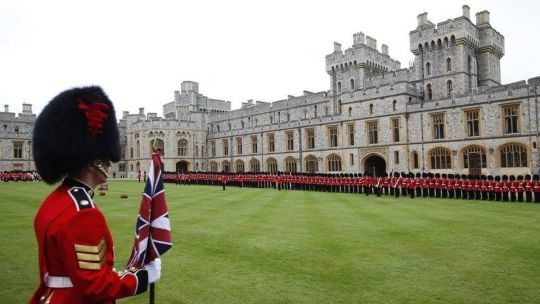
Formed in 1660, the Coldstream Guards are Britain's oldest regiment
#Coldstream Guards#Windsor Castle#Berkshire#bearskin caps#British Army#military history#royal regiment#uniforms#Union flag#regimental colours#tradition#UK
116 notes
·
View notes
Text

"The 41st Line" by Peter Rindlisbacher.
Stationed in the western end of Upper Canada during the War of 1812, the 41st saw action at the Siege of Fort Detroit and the Battle of Queenston Heights in 1812 and the Siege of Forts Miami, Stephenson and Meigs as well as the Battles of Frenchtown and Moriaviantown in 1813.
#War of 1812 Wednesday#war of 1812#british army#redcoats#infantry#regiment of foot#dressed to kill#peter rindlisbacher#military history#canadian history
19 notes
·
View notes
Text

Troops of the 1st Battalion, Northamptonshire Regiment resting in a front line trench at Molain, 17 October 1918.
14 notes
·
View notes
Photo



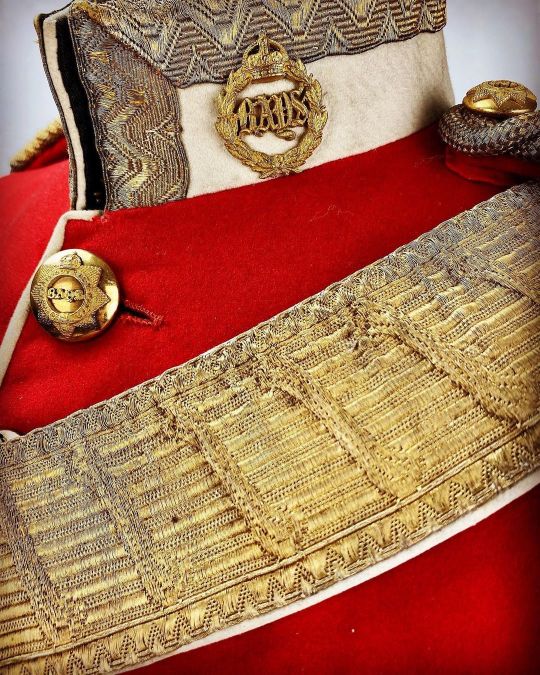
The British soldier's morale was fed not only by patriotism (`Your Country needs you') but by the unique regimental spirit that has been the envy of other armies down to the present day: one cannot let the Regiment down.
- J.M. Bereton, The British Soldier
Edwardian Queens Bays 2nd Dragoon Guards, Welsh Cavalry officer’s uniform.
#bereton#jm bereton#quote#soldier#uniform#army officer#queens bay 2nd dragoon guards#welsh cavalry#regiment#militaria#british india#patriotism#regimental spirit#british army#edwardian era#history#military history
63 notes
·
View notes